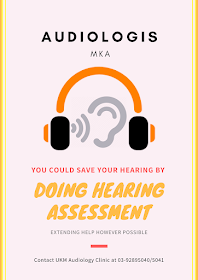In understanding the probe ear and stimulus ear principles you need to understand the basic of Acoustic Reflex measurement first. Then you will understand about this 2 principles and when to apply its during the acoustic reflex test.
Basically, the probe ear and stimulus ear principles always associate with the effect of conductive hearing loss. When someone was diagnosed with conductive hearing loss, most probably the results of acoustic reflexes will be elevated or absent.
The reasons why the acoustic reflexes will be elevated or absent is behind the principles of probe ear effect and stimulus ear effect.
PROBE EAR EFFECT
It referring to the absent of acoustic reflexes when the probe is in the pathologic ear.
Why it absent? It because of the conductive element in that probe ear blocks the changes of acoustic immitance even though the stapedius muscle able to contract.
STIMULUS EAR EFFECT
It referring to the stimulus level is reduced by the amount of air-bone (AB) gap of conductive element in reaching the cochlea.
Please understand yourself by clicking the below diagram:
Why? Because the ipsilateral test has double effect of these 2 principles (probe ear and stimulus ear effect)
References:
1) Katz, Jack (Ed.). Handbook of Clinical Audiology. 5th Ed.
Philadelphia: Lipincott Williams &
Wilkins, 2002.






0 comments:
Post a Comment